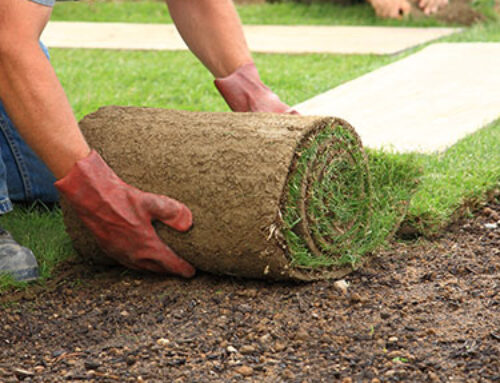Many homeowners irrigate their lawns incorrectly.
Overwatering is the most common mistake; it can damage or even kill the lawn. Overwatering leads to a shallow root system; increases a lawn’s vulnerability to weeds, insects, and diseases; reduces drought tolerance; increases thatch; encourages excessive growth; and reduces tolerance for environmental stress.
Irrigating on an “as-needed” basis is the best way to water any established, mature grass, as long as the proper amount of water is applied when needed. Irrigation is needed when leaf blades begin to fold up, wilt, or turn a blue-gray color, or when footprints remain visible after walking on the grass. Apply 1/2″ – 3/4″ of water per application. This applies water to roughly the top 8 inches of soil where the majority of the roots are. Be sure to follow any local watering restrictions.
Proper watering practices help maintain a lawn that requires less mowing and has little thatch buildup. Proper watering also helps develop a deep root system and makes the lawn less susceptible to damage by pests and environmental stresses. If large (brown) patch or gray leaf spot diseases are a continuous problem, excessive watering and nitrogen fertilization may be responsible. Certain weeds, such as dollarweed and sedges, also thrive in soils that are continuously wet.
Water requirements vary based on grass species, time of year, geographic location, soil conditions, amount of shade, and overall maintenance of a lawn. Because these varied factors each affect a lawn, rigid guidelines for your lawn’s irrigation frequency may not be accurate.
Many homeowners irrigate their lawns incorrectly. Overwatering is the most common mistake; it can damage or even kill the lawn. Overwatering leads to a shallow root system; increases a lawn’s vulnerability to weeds, insects, and diseases; reduces drought tolerance; increases thatch; encourages excessive growth; and reduces tolerance for environmental stress.
Letting your lawn “tell you when to water” means turning your irrigation system to “off” and operating it only when your lawn shows signs of drought stress.
How much water does grass need?
Water requirements vary based on grass species, time of year, geographic location, soil conditions, amount of shade, and overall maintenance of a lawn. Because these varied factors each affect a lawn, rigid guidelines for your lawn’s irrigation frequency may not be accurate.
In many parts of Florida, irrigation frequency is regulated by Water Management Districts. You may not lawfully irrigate more frequently than Water Management District regulations for your area allow. (For more information, see: http://www.dep.state.fl.us/secretary/watman/.) Be aware, as well, that you do not necessarily need to irrigate as frequently as these regulations allow. Instead, let your lawn tell you when to water.
For a professionally installed irrigations systems or irrigation maintenance in St Johns County, Julington Creek Plantation, Durbin Creek, Nocatee and surrounding communities., call or contact PGM today!
The preceding information provided for informational purposes. Experts courtesy of: UF/IFAS. “Florida Lawn Handbook: Best Management Practices for Your Home Lawn in Florida, 3rd ed (2005)“; “Let Your Lawn Tell You When To Water 1“; Photo Credit: “Kumaravel”: flickr.com





